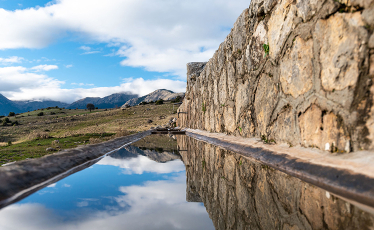On the southeastern side of Lake Stymphalia, lies the Roman Aqueduct built around 130 AD by the philhellene Roman Emperor Hadrian, with the purpose of transporting water from the springs of Stymphalia to Ancient Corinth to supply the city with water. The project started from the springs of Stymphalia and ended in the city of ancient Corinth through a vast system of pipes spanning 85 km.
It was a demanding and expensive project, which was likely completed in 8-12 years. The decision to carry out the project was made by the emperor himself when, during his visit to the city of Corinth, he became aware of the city's severe water supply problems. It is estimated that the aqueduct transported more than 80,000 cubic meters of water to the city each day. This huge amount would be enough today to meet the water needs of a city with more than 300,000 inhabitants.
The project operated for about three centuries, despite its costly and difficult maintenance. It appears to have been abandoned after the Gothic invasion in the 4th century AD, when the decline of Corinth began.
The Hadrianic Aqueduct still operates partially today, alleviating excess water in the area via the Vohaiikos Canal, and directing the water to the Asopus River, facilitating the irrigation of the Vohas plain.
Since the project spans several kilometers, visitors to the Stymphalia plain area can approach both the Vohaiikos Canal and the Aqueduct, either by hiking or using vehicles to some extent, and witness firsthand the grandeur of a perfect engineering work that, more than 2,000 years after its construction, continues to be useful to society and operates flawlessly!








